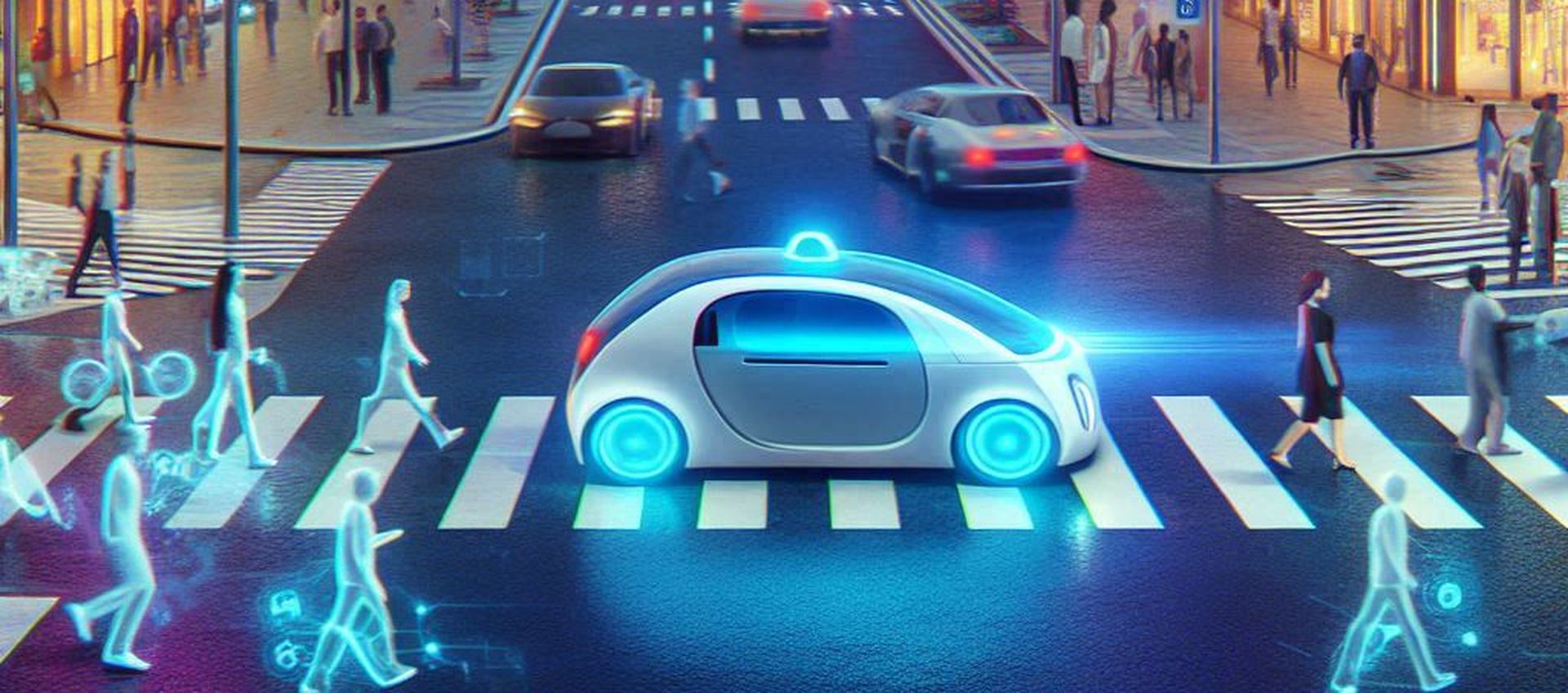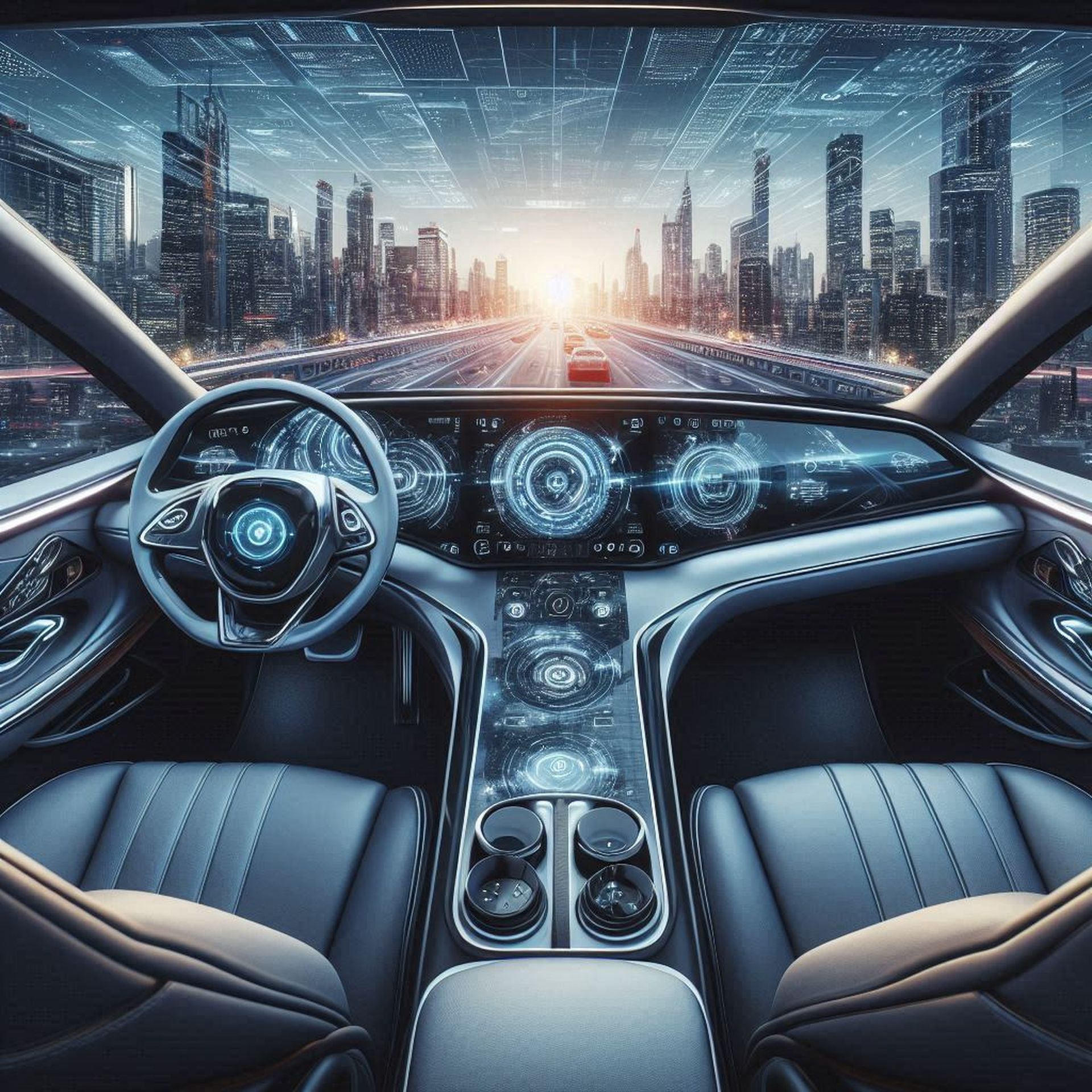AI in cars: A closer look at the best vehicle AI examples

Are you ready for AI in cars? You should be! Because the era of AI cars has already started. Vehicle AI is reshaping how we drive, offering enhanced safety features, autonomous capabilities, and personalized driving experiences. As technology continues to evolve, AI in cars promises to revolutionize transportation, making journeys safer, more efficient, and more enjoyable than ever before, and here is how.
What is an AI car?An AI car, also known as an autonomous or self-driving car, is a vehicle equipped with advanced artificial intelligence technology that enables it to navigate and operate on roads without human intervention to varying degrees. These cars use a combination of sensors (such as cameras, radar, lidar), GPS, and sophisticated algorithms to perceive their environment, make decisions, and control their movements.
AI cars typically fall into several levels of autonomy:
- Level 0: No automation; the driver controls all aspects of driving.
- Level 1: Driver assistance; the car can assist with steering, acceleration, or braking, but not simultaneously.
- Level 2: Partial automation; the car can control both steering and acceleration/deceleration simultaneously under certain conditions (e.g., adaptive cruise control and lane-keeping assist).
- Level 3: Conditional automation; the car can manage most aspects of driving in specific conditions, and the driver must be ready to take over when alerted by the system.
- Level 4: High automation; the car can operate autonomously in most conditions within predefined areas or scenarios, with the ability for the driver to intervene if needed.
- Level 5: Full automation; the car can perform all driving tasks under all conditions without human intervention.

AI cars are designed not only to improve convenience for drivers but also to enhance safety by reducing human errors. They represent a significant advancement in automotive technology, promising to revolutionize transportation by offering more efficient, safer, and potentially more accessible mobility solutions in the future.
The power of AI in carsArtificial intelligence has rapidly transformed various industries, and the automotive sector is no exception. In recent years, AI technologies have been integrated into cars to enhance safety, convenience, and the overall driving experience. Here are some features that AI brings to cars:
Autonomous Driving SystemsOne of the most significant advancements in vehicle AI is autonomous driving systems. Companies like Tesla, Waymo, and Volvo have pioneered the development of self-driving cars equipped with advanced AI algorithms. These systems utilize sensors, cameras, and radar to perceive the environment and make real-time decisions to navigate roads safely. Autonomous vehicles promise to reduce accidents, optimize traffic flow, and provide mobility solutions for elderly and disabled individuals.

AI-powered predictive maintenance systems have become essential in modern cars. These systems use machine learning algorithms to monitor vehicle components in real-time, detecting potential issues before they escalate into costly repairs. By analyzing data from sensors and historical performance, AI can predict when parts like brakes or batteries are likely to fail, prompting timely maintenance and improving vehicle reliability.
It is one of the most important features of AI in cars.
Natural Language Processing (NLP) InterfacesVoice-controlled AI assistants have become commonplace in cars, offering drivers hands-free control over various functions. Systems like Amazon Alexa for Auto and BMW’s Intelligent Personal Assistant enable drivers to adjust climate settings, play music, or get directions simply by speaking commands. NLP interfaces not only enhance convenience but also contribute to safer driving by reducing distractions.
Enhanced Driver Assistance Systems (ADAS)ADAS technologies leverage AI to augment driver capabilities and improve safety on the road. Features such as adaptive cruise control, lane-keeping assist, and automatic emergency braking use AI to monitor surroundings and assist in maneuvering the vehicle. These systems provide warnings and corrective actions to help drivers avoid collisions and navigate challenging traffic conditions effectively.
Personalized in-car experiencesAI is transforming the in-car experience by personalizing interactions based on driver preferences and habits. Systems can adjust seat positions, temperature settings, and entertainment options automatically as soon as a driver enters the vehicle. AI algorithms analyze historical data to anticipate user preferences, creating a more comfortable and tailored driving environment. Also, AI can bring some exciting entertainment features to your car, such as this example:
Want to experience these vehicle AI features? Here are some of the best AI cars that you can try today:
Best AI cars to look forToday, AI cars are setting new standards for safety, convenience, and the driving experience. Here’s a closer look at some of the leading AI cars that are reshaping our roads:
- Cadillac Escalade: Offers GM’s Super Cruise for hands-free driving on highways, ensuring safety with a driver-monitoring system.
- Genesis G90: Features Highway Driving Assist with adaptive cruise control and lane-centering for enhanced highway driving.
- Chevrolet Tahoe: Includes GM’s Super Cruise with advanced safety features for a sophisticated driving experience.
- Tesla Model S: Standard with Tesla‘s Autopilot; options for Enhanced Autopilot and Full Self-Driving Capability offer advanced autonomous features.
- BMW X5: Driving Assistance Professional package provides traffic-jam assist and adaptive cruise control for highway driving.
- Mercedes-Benz E-Class: Offers semi-autonomous driving with the Driver Assistance package, combining luxury and advanced safety features.
- Volvo V90 Cross Country: Comes standard with Pilot Assist for semi-autonomous driving, emphasizing safety and comfort on the road.
These cars showcase cutting-edge AI technologies that enhance safety, convenience, and the overall driving experience, setting new standards in automotive innovation.
How should a vehicle AI be?A well-designed vehicle AI system integrates advanced technologies to enhance safety, convenience, and overall driving experience. Safety is paramount, with AI-driven features such as adaptive cruise control, lane-keeping assist, and collision avoidance systems working together to mitigate risks and prevent accidents. These systems continuously monitor the vehicle’s surroundings, anticipating potential hazards and reacting swiftly to ensure driver and passenger safety.

User-friendliness is another crucial aspect of effective vehicle AI. Interfaces should be intuitive and ergonomic, allowing drivers to interact seamlessly with AI features through voice commands, touchscreens, or steering wheel controls. This user-centric design minimizes distractions, enabling drivers to focus more on the road while effortlessly accessing essential functions like navigation, entertainment, and climate control.
An ideal vehicle AI is adaptive and learning, capable of personalizing the driving experience based on individual preferences and habits. It adjusts settings such as seat positions, music preferences, and driving modes over time, creating a tailored and comfortable environment for each user. This adaptive capability extends to predictive maintenance alerts, where AI algorithms analyze vehicle data to anticipate maintenance needs before they become critical issues, thereby enhancing reliability and reducing downtime.
Moreover, a well-developed vehicle AI system integrates seamlessly with other smart devices and platforms. This connectivity enables features like remote vehicle monitoring, over-the-air software updates, and integration with smart home systems. This interconnectedness not only enhances convenience but also ensures that the vehicle remains up-to-date with the latest technological advancements and safety enhancements.
Ethical considerations are also crucial in the design of vehicle AI. Systems must operate ethically and responsibly, prioritizing human safety and complying with regulatory standards for autonomous driving capabilities. Transparent communication of the AI’s capabilities and limitations to the driver is essential, ensuring that users understand when autonomous features are engaged and when manual intervention is necessary.
In summary, a well-executed vehicle AI system combines advanced safety features, intuitive interfaces, adaptive personalization, seamless connectivity, and ethical operation. By incorporating these elements, vehicle AI can significantly improve the driving experience, making journeys safer, more enjoyable, and more efficient for drivers and passengers alike.
All images are generated by Eray Eliaçık/Bing
